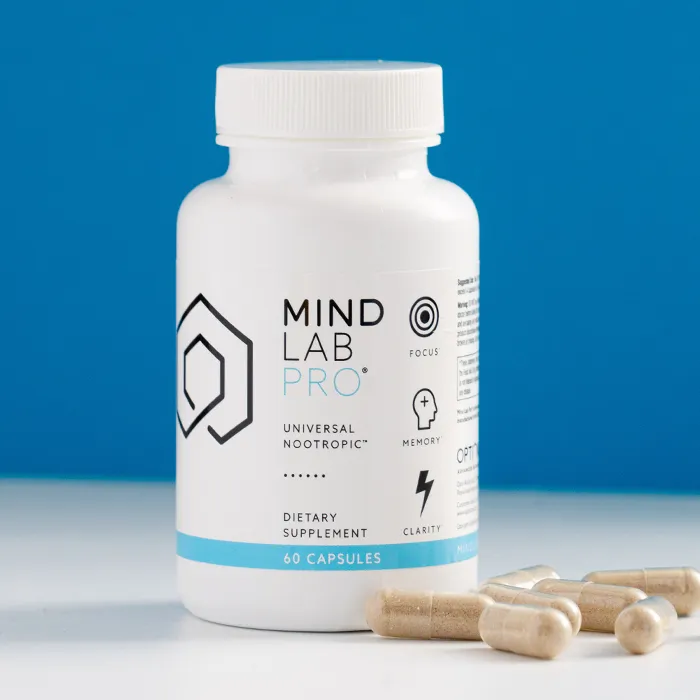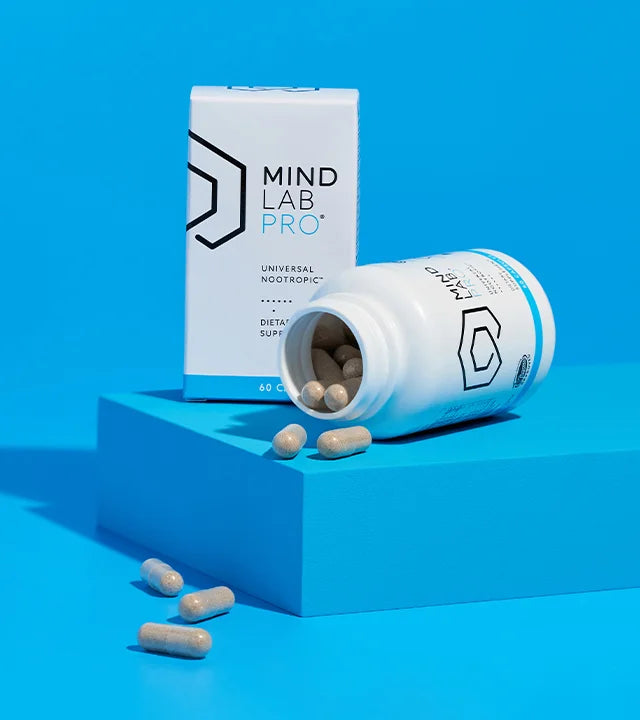Developing tolerance is normally considered a good thing in the context of life situations, such as parenting and your job. However, developing a tolerance to a supplement, or in this case, nootropics, is another matter entirely.
Nootropics are some of the most potent substances for enhancing brain health and cognitive function. So, if you do find you are becoming tolerant to them and they seem to be losing their power, it’s time to address some dosing strategies.
Building a tolerance to something is a common physiological phenomenon and there are steps you can take to avoid or minimize the well-known tolerance trap!
This article explores some steps you can take to avoid becoming tolerant to nootropics, including nootropic cycling. Firstly, let’s take a look at tolerance and what exactly it is!
Key Takeaways
- Nootropic cycling = planned breaks to limit tolerance and side effects—most relevant to stimulants and highly dopaminergic compounds.
- Many natural, stim-free nootropics (e.g., Citicoline, Lion’s Mane, Bacopa, PS, Pine Bark, L-Theanine, Rhodiola) are designed for steady daily use and often don’t require cycling.
- When to consider cycling: noticeable tolerance/jitters, sleep disruption, or stacking many energizers at once.
- Simple protocols: try “5 days on / 2 off,” or 4 weeks on / 1 off for stimulant-heavy routines. Re-evaluate dose during each restart.
- Balanced stacks like Mind Lab Pro® aim for daily, sustainable support without caffeine-type side effects—minimizing the need to cycle.

What is Tolerance and Why Does it Happen?
In the context of nootropics and other pharmaceuticals, developing a tolerance means that after taking the substance for a while, your body will respond to them by making them increasingly less effective.
The body is always in a state of seeking homeostasis, which is a self-regulating process that living things use to actively remain in stable conditions that are necessary for survival.
When you start taking a substance, a large part of its effectiveness is down to the element of physiological surprise. In other words, your body isn’t familiar with it so has no defenses against it, so the substance can successfully disrupt homeostasis to achieve the desired result.
Though, as your body becomes more accustomed to the substance you are ingesting, it implements a variety of biological adaptations to minimize its response to them.
Homeostasis is maintained by regulating various body systems, including blood pressure, glucose levels, fluid balance, heart rate, body temperature, and energy output.
But, when the substance that’s attempting to disrupt homeostasis is a nootropic that modulates the production of neurotransmitters, the body responds by attempting to regulate this balance.
This can be accomplished in several ways, including down-regulating receptors, or decreasing the number of neurotransmitters being produced. Though, the end result is always the same - the body finds a way to neutralize the effects of nootropics.
So, what can we do when this does happen? Well, users may find that they need to take larger or more regular doses to achieve the initial effects.
Though, this is not the most desirable solution. Not only is it quite dangerous to adjust the doses in this way, but it’s also counterproductive in the long term.
In summary, the more substances we take and the more frequently we take them, the faster our body will develop tolerance by putting up defenses to biologically block the effects we want to see.
The doctors wanted me on Adderall or Ritalin which are both addictive. I wanted to try something natural first and see what happens and I can honestly say that these supplements are amazing!Marisol R.

Can Building a Tolerance Lead to Addiction?
This is a common concern in the nootropic world - are they addictive substances? Or can building a tolerance lead to addiction?
Well, in short, tolerance does not equal addiction, though there is no denying that it cannot potentially step in that direction.
If users compensate for tolerance by taking more and more of a substance in increasingly larger doses, the body will continue to adapt by producing more and more of the chemicals needed to maintain homeostasis and block the effects of the substance.
If this cycle happens regularly, you may find yourself in a situation where you need to take the substance to offset the body’s defenses and feel normal.
It’s worth noting that addiction doesn’t happen to everyone upon taking any substance to improve mental performance, though it can happen with certain substances, so it’s good to be aware!
So, if taking larger, more frequent doses is not ideal for overcoming tolerance, what is?!
Tip: If your stack is stimulant-heavy (e.g., caffeine + multiple energizers), consider cycling or lowering dose. If your stack is stim-free and focused on long-term brain health, consistent daily use is often the goal.
Nootropic Cycling: Avoiding Becoming Tolerant
There are many strategies you can adopt to help avoid tolerance, but cycling is one of the most popular!
Cycling means establishing a pattern of taking a supplement for a specific number of days, weeks, or months, followed by a period when you don’t take it. For example, you may find some nootropics suggest a cycling strategy of "5 days on, 2 days off", or "3 months on, 1 month off".
The duration of each cycle largely depends on the nootropic itself and how long you’ve been taking it continuously. If you took a nootropic for 3 months and experienced great results but then the effects started to dip during month 4, then the 3:1 cycle may be a good option for you.
Or, if the effects dipped after a week of use, it may be beneficial to take a couple of days off before taking it again.
There is not necessarily any right or wrong approach to cycling as it is largely independent. Everybody’s body reacts differently, so there are no universally correct recommendations for nootropic cycling.
The best way to determine what kind of cycle you should implement is through personal monitoring and figuring out what works best for you, alongside research.
Learn as much as you can about the nootropics you are taking to give you an idea of how it affects others. This will give you some good ideas to start with.
In addition to this, monitor your response to the nootropics you’re taking and temporarily discontinue use as soon as you notice your tolerance building.

The Take-Home Message
Tolerance is a problem in the nootropic world. While it cannot be completely avoided, there are steps you can take to minimize tolerance-related issues.
While it sometimes makes sense to simply take higher and more frequent doses, this is not an ideal way to approach it as it could be dangerous and cause more issues long term.
Begin by implementing an appropriate cycle schedule for the nootropics you are taking, and do some research. The more you know, the better you’ll be at implementing a cycle and optimizing the results you are seeking.
Monitor your response closely and change your cycle as and when you feel it’s appropriate, and avoid the “more is better” mindset.
Want to take out the guesswork? Mind Lab Pro is the answer! This is the world’s best all-in-one nootropic formula that functions as a whole-brain optimizer to support a state of peak overall mental performance.
We recommend taking Mind Lab Pro in the minimum dose to start with, cycling it following either a “4 weeks on, 1 week off” schedule or a “5 days on, 2 days off” schedule!
